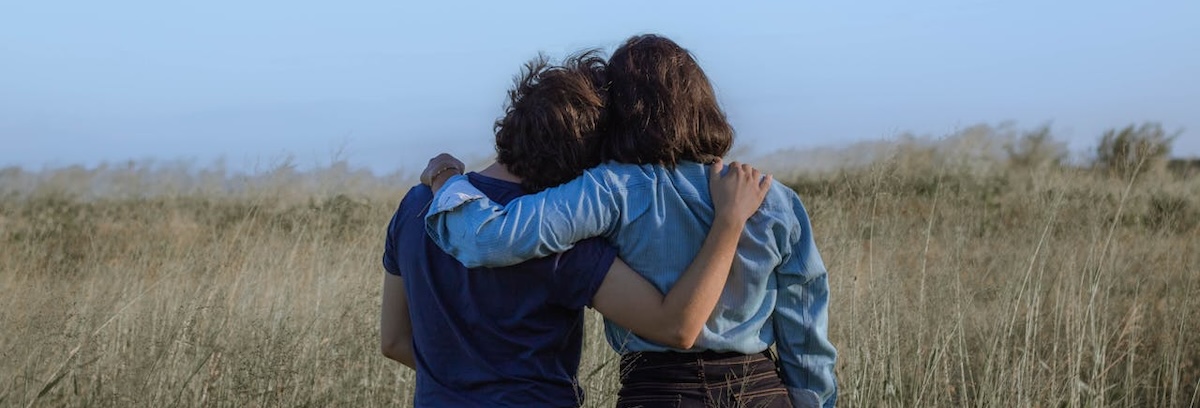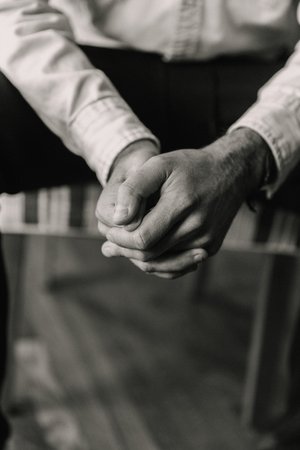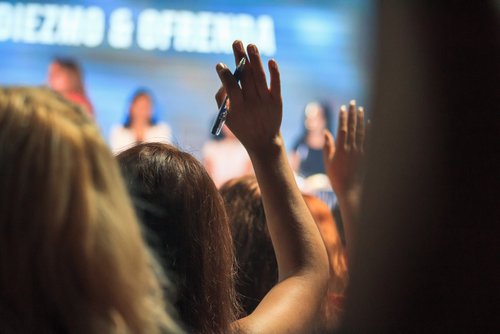The origins of the LGBTQIA+ community are deeply rooted in history, culture, and societal evolution. From ancient civilizations to the modern-day global movement, the journey of the LGBTQIA+ community is a testament to resilience, activism, and the quest for equality. In this blog post, we will explore the rich tapestry of LGBTQIA+ history, from early signs of diversity in ancient cultures to the pivotal moments that shaped the community in the 20th century and its continued growth in the 21st century. Join us on a journey through time and across the globe to uncover the origins and evolution of the LGBTQIA+ community.
Understanding the LGBTQIA+ Terminology
The LGBTQIA+ community encompasses a diverse range of sexual orientations, gender identities, and expressions. To fully understand the origins and evolution of this community, it is essential to grasp the terminology used to describe its members. In this section, we will explore the various terms and their meanings within the LGBTQIA+ spectrum.
- LGBTQIA+: The acronym stands for Lesbian, Gay, Bisexual, Transgender, Queer or Questioning, Intersex, and Asexual or Ally. The “+” symbolizes inclusivity and acknowledges other identities that may not be explicitly listed.
- Sexual Orientation: Refers to an individual’s enduring pattern of emotional, romantic, and/or sexual attractions towards others. It can include heterosexual, homosexual, bisexual, and asexual orientations, among others.
- Gender Identity: Refers to an individual’s deeply felt sense of being male, female, both, or neither. It may not necessarily align with the sex assigned at birth.
- Cisgender: Describes individuals whose gender identity aligns with the sex assigned to them at birth. For example, a person assigned female at birth who identifies as a woman is cisgender.
- Transgender: Describes individuals whose gender identity differs from the sex assigned to them at birth. For instance, a person assigned male at birth who identifies as a woman is transgender.
- Queer: Originally used as a derogatory term, “queer” has been reclaimed by some members of the LGBTQIA+ community. It can be an umbrella term for sexual orientations and gender identities outside of heterosexual and cisgender norms.
- Intersex: Refers to individuals born with variations in sex characteristics that may not fit typical binary notions of male or female. Intersex is a natural variation, not a disorder.
- Asexual: Describes individuals who do not experience sexual attraction or have a low interest in sexual activity. Asexuality is a valid sexual orientation, not a lack of sexuality.
- Ally: Refers to individuals who support and advocate for the rights and well-being of LGBTQIA+ individuals, despite not identifying as LGBTQIA+ themselves.
Understanding the terminology used within the LGBTQIA+ community is crucial for respectful communication and fostering inclusivity. By familiarizing ourselves with these terms, we can create a more accepting and understanding society for all.
Early Signs of the LGBTQIA+ Community in History
Throughout history, there have been early signs and indications of diverse sexual orientations, gender identities, and expressions that can be seen as precursors to the modern LGBTQIA+ community. In this section, we will explore the presence of homosexuality, transgender identity, and bisexuality in various ancient civilizations, indigenous cultures, and artistic expressions.
- Signs of Homosexuality in Ancient Civilizations: a. Ancient Greece: Homosexuality was prevalent and accepted in ancient Greek society, with relationships between adult men and adolescent boys being common. Prominent examples include the sacred bonds between warriors in the Spartan army and the love poems of Sappho. b. Ancient Rome: Homosexuality was also present in ancient Rome, where same-sex relationships were not uncommon. The emperor Hadrian’s relationship with Antinous and the writings of Roman poet Catullus are notable examples.
- Transgender Identity in Indigenous Cultures: a. Two-Spirit People: Many indigenous cultures in North America recognize the existence of Two-Spirit individuals who embody both masculine and feminine qualities. They often hold respected roles within their communities, serving as mediators, healers, or spiritual leaders. b. Hijra in India: The Hijra community in India has a long history and is recognized as a distinct gender identity. Hijras are individuals assigned male at birth who adopt female gender roles. They have a rich cultural heritage and have faced both acceptance and marginalization throughout history.
- Bisexuality in Literature and Art: a. Ancient China: Bisexuality was celebrated and depicted in Chinese literature and art, with numerous references to same-sex relationships in poetry and stories. b. Renaissance Art: Bisexual themes can also be found in Renaissance art, such as the works of Michelangelo and Leonardo da Vinci, which often depicted androgynous figures and explored non-normative expressions of sexuality.
These early signs of LGBTQIA+ existence in history provide evidence that diverse sexual orientations and gender identities have always been a part of human society. By recognizing these historical examples, we can acknowledge the long-standing presence and contributions of the LGBTQIA+ community throughout time.
The LGBTQIA+ Community in the 20th Century
The 20th century was a transformative era for the LGBTQIA+ community, marked by significant events, social movements, and milestones that shaped the path towards equality and recognition. In this section, we will explore the impact of the World Wars, the Stonewall Riots, and the AIDS crisis, which played pivotal roles in the development of the LGBTQIA+ community during this time.
- The Impact of the World Wars: a. World War I: The war created opportunities for LGBTQIA+ individuals to socialize and form networks, both within the military and in urban centers influenced by the war effort. Cities like Paris, Berlin, and New York became havens for queer communities, fostering cultural and artistic expression. b. World War II: The war forced many LGBTQIA+ individuals to conceal their identities due to the oppressive and discriminatory policies of the time. However, it also led to increased visibility and activism, as LGBTQIA+ individuals served in the military and became involved in the resistance movements.
- The Stonewall Riots and the Gay Liberation Movement: a. Stonewall Riots: In 1969, a series of spontaneous protests erupted at the Stonewall Inn in New York City, in response to ongoing police harassment and discrimination against the LGBTQIA+ community. This event marked a turning point and ignited the modern gay rights movement. b. Gay Liberation Movement: Following the Stonewall Riots, the Gay Liberation Movement gained momentum, advocating for LGBTQIA+ rights, visibility, and acceptance. Organizations such as the Gay Liberation Front and the Human Rights Campaign emerged, fighting for equality on various fronts.
- The AIDS Crisis and Activism: a. The Emergence of AIDS: In the early 1980s, the HIV/AIDS epidemic devastated the LGBTQIA+ community, leading to widespread illness, deaths, and fear. Discrimination and stigmatization further compounded the challenges faced by those affected. b. Activism and Awareness: The AIDS crisis spurred a wave of activism within the LGBTQIA+ community. Organizations like ACT UP (AIDS Coalition to Unleash Power) fought for access to healthcare, research, and destigmatization. This period also witnessed the rise of prominent LGBTQIA+ activists, such as Larry Kramer and Cleve Jones.
The 20th century was a time of both adversity and progress for the LGBTQIA+ community. The World Wars, the Stonewall Riots, and the AIDS crisis all played significant roles in shaping the community’s identity, resilience, and determination to fight for equality and social change.
The Growth and Expansion of the LGBTQIA+ Community in the 21st Century
The 21st century has witnessed remarkable growth and expansion of the LGBTQIA+ community, marked by increased visibility, legal advancements, and the evolution of LGBTQIA+ terminology. In this section, we will explore the significant developments that have shaped the community in recent years.
- Increased Visibility and Acceptance: a. Media Representation: The 21st century has seen a significant increase in LGBTQIA+ representation in mainstream media, including films, TV shows, and literature. This visibility has played a vital role in shaping public perception and fostering acceptance. b. Coming Out and Pride Movements: More individuals have felt empowered to come out and openly embrace their LGBTQIA+ identities. Pride parades and events have grown in size and number, providing spaces for celebration, advocacy, and community building.
- Legal Milestones and Setbacks: a. Marriage Equality: One of the most significant legal victories for the LGBTQIA+ community was the legalization of same-sex marriage in various countries. This landmark achievement has granted LGBTQIA+ couples the same rights and recognition as heterosexual couples. b. Setbacks and Challenges: Despite progress, legal challenges and setbacks persist. Some countries have enacted laws that criminalize same-sex relationships or restrict LGBTQIA+ rights. Ongoing advocacy and legal battles are necessary to secure full equality worldwide.
- The Expansion of LGBTQIA+ Terminology: a. LGBTQIA+ and Beyond: The LGBTQIA+ acronym has continued to expand and evolve to be more inclusive of diverse identities. Additional letters have been added, such as the “+” symbol, which acknowledges the presence of other identities not explicitly mentioned. b. Gender Identity Terminology: The understanding of gender identity has expanded to include a broader range of terms, such as non-binary, genderqueer, and genderfluid. This recognition allows individuals to express their authentic selves beyond traditional binary notions.
The 21st century has witnessed both progress and ongoing challenges for the LGBTQIA+ community. Increased visibility, legal advancements, and evolving terminology have contributed to the growth and expansion of the community, fostering greater acceptance and understanding. However, the fight for full equality and inclusion remains vital in ensuring a more equitable future for all LGBTQIA+ individuals.
The Global Perspective of the LGBTQIA+ Community
The LGBTQIA+ community is not bound by geographical borders, and its struggles and triumphs extend beyond any single country or culture. In this final section, we will explore the global perspective of the LGBTQIA+ community, including the state of LGBTQIA+ rights around the world, the international impact of LGBTQIA+ activism, and the cultural differences and similarities that shape the experiences of LGBTQIA+ individuals worldwide.
- LGBTQIA+ Rights Around the World: a. Progressive Nations: Some countries have made significant strides in LGBTQIA+ rights, legalizing same-sex marriage, enacting anti-discrimination laws, and protecting transgender rights. Examples include the Netherlands, Canada, and New Zealand. b. Ongoing Challenges: In many parts of the world, LGBTQIA+ individuals face legal and social challenges, including criminalization of same-sex relationships, lack of legal recognition, and widespread discrimination. Countries like Russia, Uganda, and Saudi Arabia represent some of the significant challenges faced by the LGBTQIA+ community.
- The International Impact of LGBTQIA+ Activism: a. Global Solidarity: LGBTQIA+ activism has transcended borders, with activists and organizations collaborating across nations to advocate for equality. International Pride events, conferences, and alliances have strengthened the global LGBTQIA+ movement. b. Supporting Global LGBTQIA+ Communities: International organizations and initiatives provide support to LGBTQIA+ individuals in countries with hostile environments. They offer resources, legal aid, and advocacy to promote human rights and equality.
- Cultural Differences and Similarities: a. Historical and Cultural Context: The experiences of LGBTQIA+ individuals are shaped by cultural, historical, and religious factors. Attitudes towards LGBTQIA+ individuals vary significantly across cultures, with some societies being more accepting and inclusive than others. b. Intersectionality: The intersection of LGBTQIA+ identities with race, ethnicity, religion, and socioeconomic status creates unique challenges and experiences. Understanding these intersections is crucial for a comprehensive understanding of the global LGBTQIA+ community.
The global perspective of the LGBTQIA+ community highlights the diverse challenges and progress made worldwide. While some countries have advanced LGBTQIA+ rights, others continue to struggle with discrimination and legal barriers. The international impact of LGBTQIA+ activism and the recognition of cultural differences emphasize the need for continued advocacy, education, and support to ensure equality and acceptance for all LGBTQIA+ individuals, regardless of their location.


















